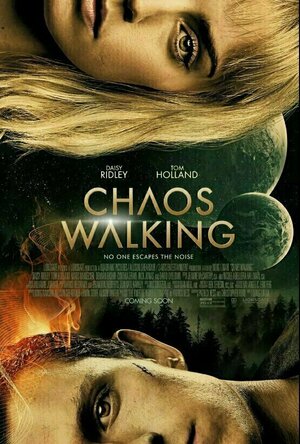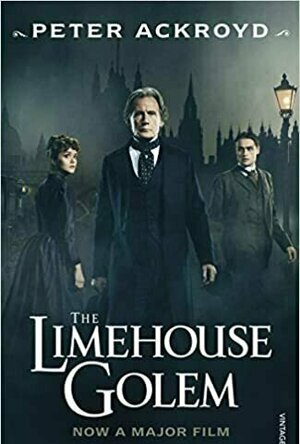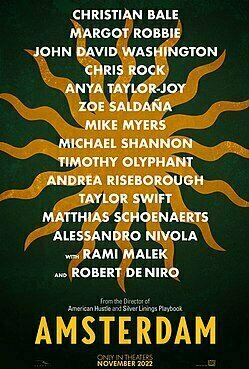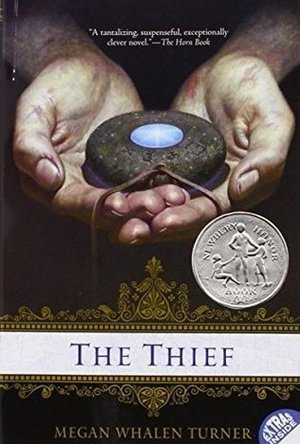
The Thief (The Queen's Thief #1)
Book
Discover the world of the Queen's Thief New York Times-bestselling author Megan Whalen Turner's...
Gareth von Kallenbach (980 KP) rated Chaos Walking (2021) in Movies
Mar 3, 2021
The rise of streaming services has allowed many books to be adapted into series without having to cut much of the adult content in the books which would make it difficult for network television.
As such it makes adaptations such as “Chaos Walking” a delicate undertaking. The film is based on a series of books and stars Tom Holland as Todd; a young ma living on a distant world where there are no women and people can hear and see each other’s thoughts by a process known as “Noise”.
Their rustic colony is run with a firm hand by their Mayor (Mads Mikkelsen); who keeps those around him from seeing his thoughts which gives him a big advantage over those who rule.
When a landing craft from a mothership filled with a new wave of colonists crashes on the planet; Todd is shocked to find that the only survivor is a woman named Viola (Daisy Ridley) whose arrival disrupts the community.
The Mayor wishes to keep her from contacting her ship so they can seize it when it lands to maintain control of his empire as he sees the arrival of new individuals as a threat to his power.
Todd and Viola escape trying to reach a distant colony where she hopes to find a way to warn her ship about the danger the Mayor and his men present and they pursue the duo to keep this from happening.
The film lightly touches on the native race that Todd believes killed all the women of their colony but they are not visited save for a brief appearance. It is clear that the Mayor is hiding something and the reveal of what and why is fairly underwhelming which reduces him and most of his followers as thinly developed stock characters.
There is also the mystery as to why the Mothership does not bother to do any sort of follow up when they did not hear from their lander and like many aspects of the film; require the audience to simply go along with things and not ask too many questions to make things work.
Thankfully the two leads are interesting enough and they hold attention even when the story is slowly moving along with scene after scene of rivers, woods, and a little conversation.
One big issue with the film is the Noise as the visualization of thoughts as well as hearing them mixed in with verbal communication can get very confusing as it is like multiple voices in a crowded room.
Despite the issues, the potential is there and I found myself wondering what was next for the characters and hope that they do adapt future books in the series. While the film on its own does not work as a fully developed story’ as an introduction to the series it does enough to peak the interests for more.
3.5 out of 5
BookInspector (124 KP) rated The Limehouse Golem in Books
Sep 24, 2020
The narrative of this novel was very well written and researched. I did enjoy the story which author was sharing with the reader, however, there were many philosophical parts in this book, which I found boring and unnecessary. It reminded me of all the dull books I had to read while in school, so I just skim read those parts. 😦 I would like to throw in a disclaimer, that there are graphic violent parts in this book, and it is not suitable for sensitive readers. 😉
The writing style of this book is impeccable. Peter Ackroyd is a master of his craft and truly gifted writer. This novel was first published in 1994, but it feels like it was written in the 19th century. I could clearly see the author’s knowledge in this book because it was shining through the pages. The language used in this novel was very sophisticated but not very difficult to read, and the chapters where decent length, so it did not leave me bored. I really enjoyed the ending of this novel, I think it was well deserved and rounded up the story very nicely.
The film actually surprised me, it had a completely different approach to the whole story and told it through Inspector Kildare’s perspective. In the book, the whole police investigation was very vague, so it was a real surprise to see this approach, and I didn’t really mind it. The acting was marvellous and Mr D. Booth (Dan Leno) was absolutely amazing. He had the charisma and the skill to be a star of this movie. The whole movie was not a full representation of the book, they used some parts from the book and amended it to fit their story, but I liked it nevertheless. This movie is not suitable for children under 15, as it has some really gross scenes in there.
So to conclude, this book is very well written and amusing read, with well rounded and charismatic characters, and the narrative is twisty and always changing, keeping the reader interested. I do recommend to experience Lizzie’s journey and to watch the film afterwards. They do compliment each other, offering different perspectives and different interpretations, so give it a try and I hope you will enjoy it 🙂
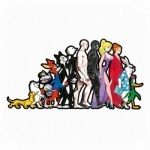
The Animator’s Survival Kit
Reference and Education
App
World-renowned animator and triple-Oscar-winner Richard Williams presents ‘The Animator’s...

eboutic.ch
Lifestyle and Shopping
App
Faites votre shopping en deux clics avec l’App eboutic.ch. Nous vous proposons les plus grandes...

Imperial: War of Tomorrow
Games
App
Welcome to the military world following a global apocalypse that splintered the map into factions...

Sweet Baby Girl Halloween Fun - Spooky Makeover & Dress Up Party
Games and Education
App
Halloween is coming! Play with Sweet Baby Girl and have the most adventurous Halloween celebration...
BankofMarquis (1832 KP) rated Amsterdam (2022) in Movies
Nov 21, 2022
The latest film from this cinematic auteur, AMSTERDAM, is jam-packed with stars from Christian Bale to John David Washington to Margot Robbie, Robert DeNiro, Zoe Saldana, Rami Malek, Andrea Riseborough, Chris Rock, Michael Shannon, Michael Myers, Timothy Olyphant, Any-Taylor Joy and even Taylor Swift show up to play part in this drama/thriller/comedy that takes a real life event and gives it the David O. Russell touch.
And…what is the David O. Russell touch? It is - for better or for worse - a skewed perspective of the goings-on in the film, commenting on the action while driving a narrative forward. On the one hand, he is liked by many actors for he let’s them improvise and work through their performances. However, on the other hand, if he is not getting what he wants, he is also known as a antagonistic Director as he has had on-set feuds with George Clooney, Lilly Tomlin and Amy Adams. But…on the other hand…he has been nominated for Best Director 3x and quite a few of his actors (Bale, Adams, Cooper, Jennifer Lawrence, etc.) have been nominated for an Oscar.
For AMSTERDAM the film’s tone and intention meander for the 1st half of the movie - as do the performances - before settling into a crackerjack thriller/murder-mystery/espionage film.
And that’s too bad for many will be turned off by the 1st half - the meandering is detrimental to the audience’s enjoyment - it feels like a series of “acting scenes” and not a coherent grouping of scenarios leading to a plot. This will turn many off - and will have them turning off the film - before it settles down and becomes good.
As is often the case with Russell’s films, the performances are good (Washington), better (Robbie) and best (Bale, channelling his inner Peter Faulk) while the other actors support the 3 leads in surprising ways. If nothing else, see this movie to watch all of these wonderful performers plying their craft. Of course, you’ll be saying to yourself “that’s wonderfully acted” for you won’t be immersed into the people, emotions or the plot at the beginning.
And that is Russell’s issue. If he could have settled on the tone and focus of the 2nd half of the film in the first half, he’d have himself another Oscar contending film. But, as it were, it’s an interesting curiosity - one that will have you entertained for a few hours, but will leave you scratching your head longing for “what could have been”.
Letter Grade: B (“C” for the first half, “A” for the 2nd half)
7 stars (out of 10) and you can take that to the Bank(ofMarquis)
Gareth von Kallenbach (980 KP) rated Ghostbusters: Afterlife (2021) in Movies
Nov 16, 2021
While a successful video game and merchandise line kept the franchise alive; the 2016 reboot with an all-female team failed to capture the magic at the box office and again put the franchise’s cinematic future in question.
Thankfully after several delays due to the Covid 19 Pandemic; “Ghostbusters Afterlife” has arrived and is the worthy sequel that does justice to the original film and sets the stage well for future cinematic exploits.
The film follows a down on her luck mother named Callie )Carrie Coon) and her children Trevor (Finn Wolfhard); and Phoebe (Mckenna Grace), as they are forced to move to a dilapidated farm in rural Oklahoma following the passing of Callie’s estranged father and her subsequent eviction.
A series of unexplained earthquakes clues the smart and precocious Phoebe that something is up and with her new friend Podcast (Logan Kim), and teacher Mr. Grooberson (Paul Rudd); help her uncover her connection to the original Ghostbusters and the abundance and significance of the gear that her Grandfather has left on the farm.
Things soon take a turn for the worse and despite skeptical locals and the emerging danger, Phoebe, Trevor, and their friends have to battle the forces of evil to save the world.
The movie takes its time getting to the action and spends plenty of time establishing the characters, their motivations, and their relationships with one another. There are abundant homages to the original film; some of which are very subtle and clever but never seem gratuitous or tacked on.
The film also does not rely on the FX to tell the tale as while there are some solid effects in the film; this is a character-driven tale and the new cast works well with some surprise guests who pop up throughout the film.
Director Jason Reitman; son of the Director of the original film; clearly knows and loves the material as he not only helped craft the story but deftly weaves a new tale into the franchise which also fits well with the first film and does not attempt to reboot but rather continue the franchise.
There are two extra scenes in the credits that you will not want to miss as not only are they great fun; but also tease of future adventures to come.
The film also has a few touching moments that caused some unexpected emotion from the audience at our Press Screening and helped establish “Ghostbusters Afterlife” as not only a winning entry into the series but also one of the most enjoyable films of the year.
4.5 stars out of 5.
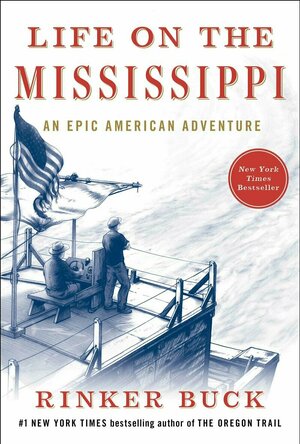
Life on the Mississippi
Book
The eagerly awaited return of master American storyteller Rinker Buck, Life on the Mississippi is an...
